A truck with axle loads of 50kN and 30kN on a wheel base of 2.5m crosses a 10-m span. Compute the maximum shearing force and the maximum bending moment.



First, we compute the resultant load of the parallel force system as well as its location from our reference axis at the 50kN load. One may choose any reference axis, depending on preference.
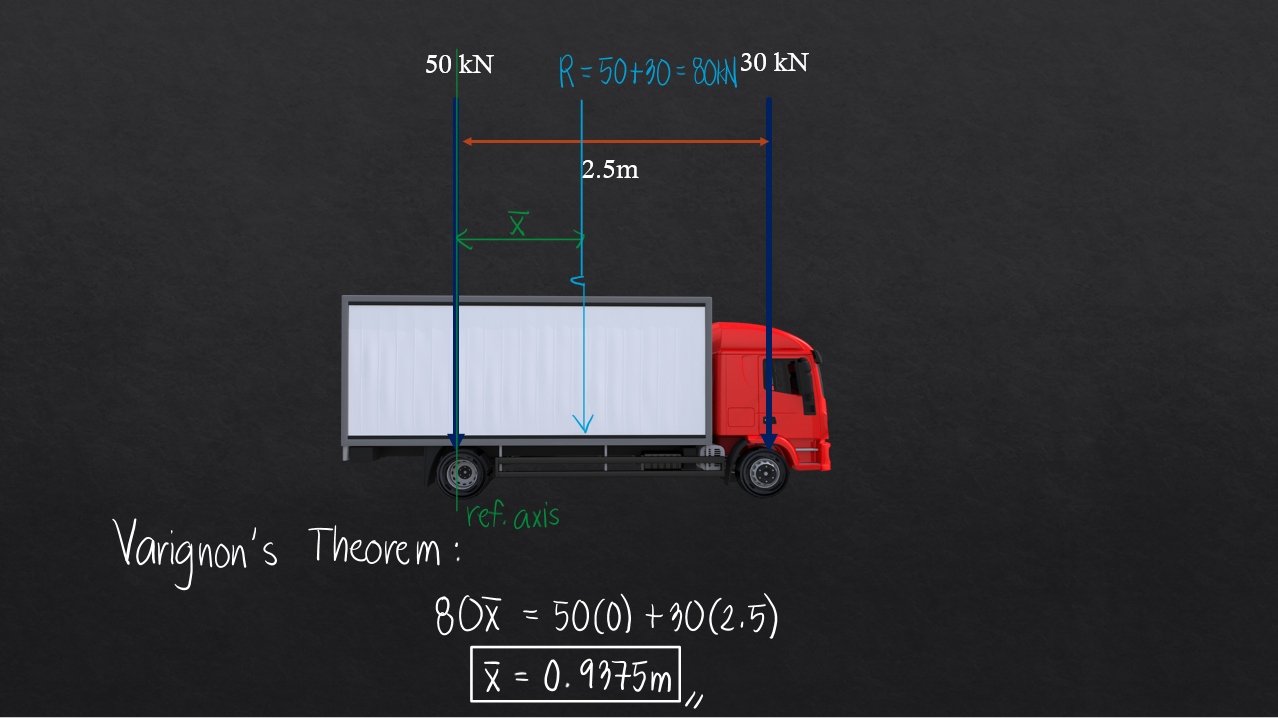
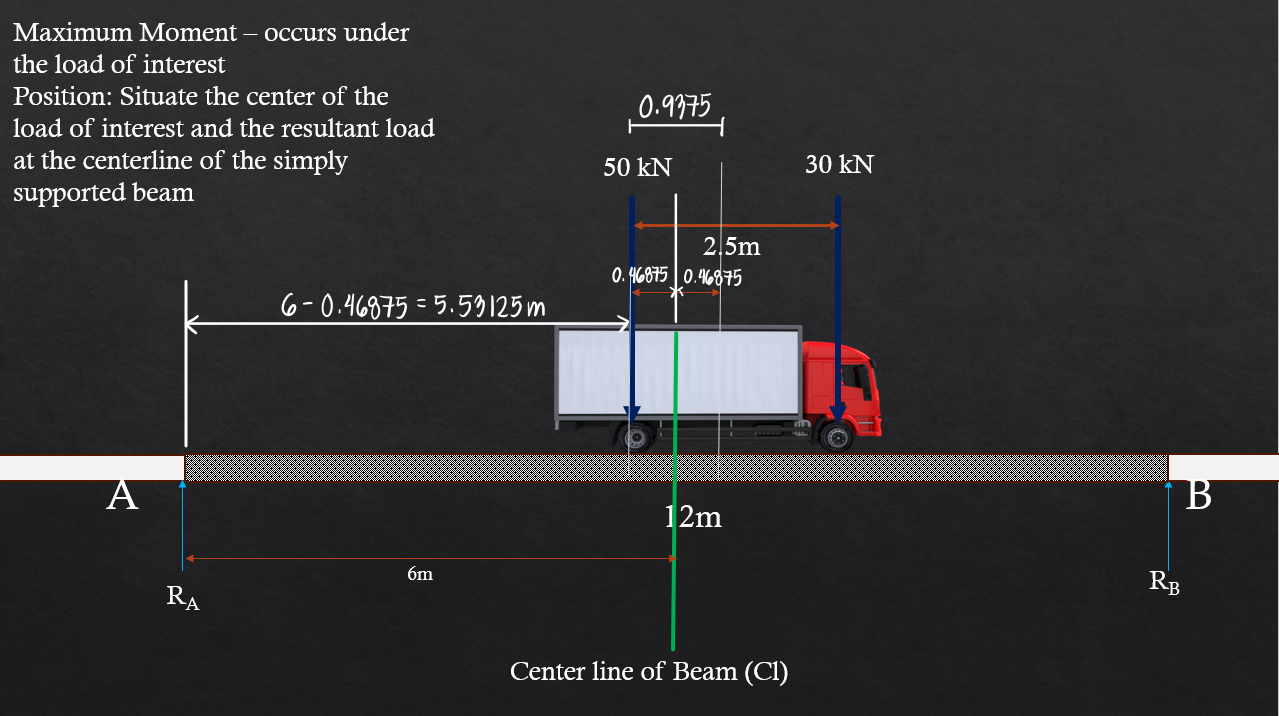
The maximum bending moment for two moving loads, given that all loads are inside the span, occurs under the larger load. Here, we draw the entire shear and moment diagram for the purpose of demonstration. The computed maximum bending moment is 203.96kN-m. Alternatively, we can use the general formula for the maximum moment caused by two moving loads (if all loads are within the span): $$\frac{(PL-P_s(d))^2}{4PL}$$where:
$P=P_{bigger}+P_{smaller}$
$P_s=smaller \ load$
$L=length \ of \ span$
$d=distance \ between\ wheel \ loads$
Therefore, we have:
$$\frac{(80 \cdot 12-30 \cdot 2.5)^2}{4 \cdot 80 \cdot 12} = \boxed{203.96kN \cdot m}$$
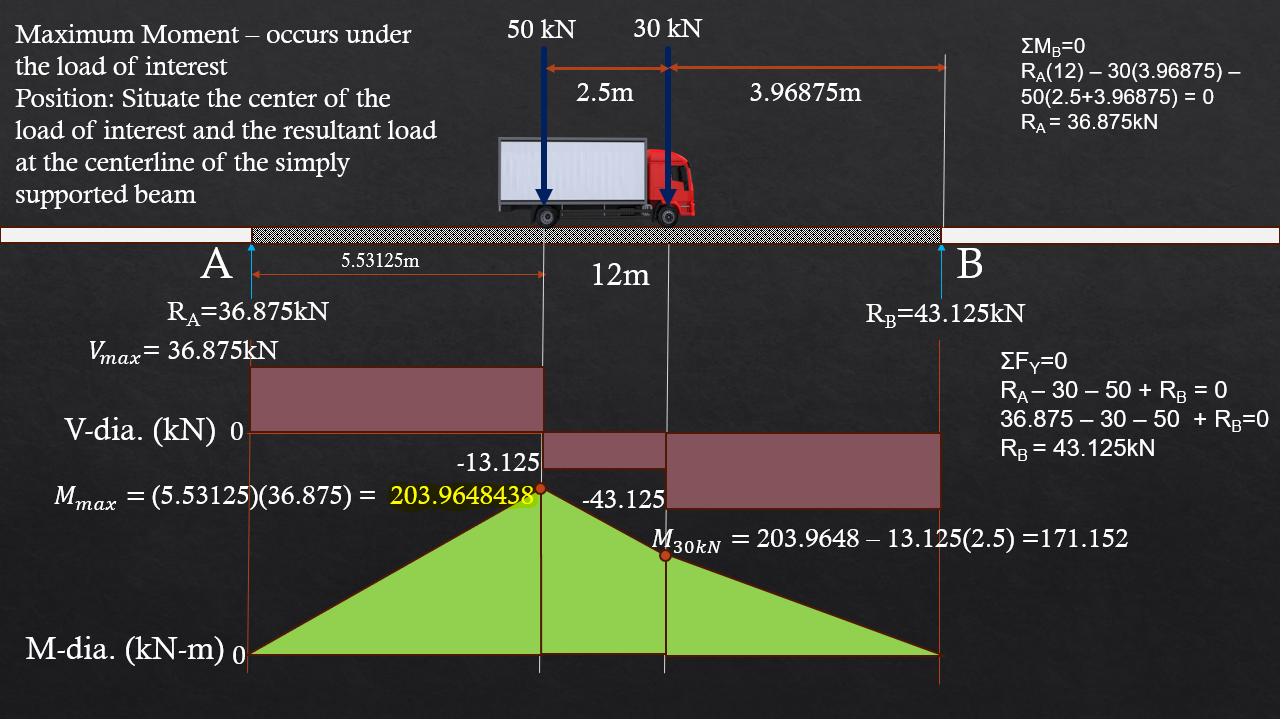
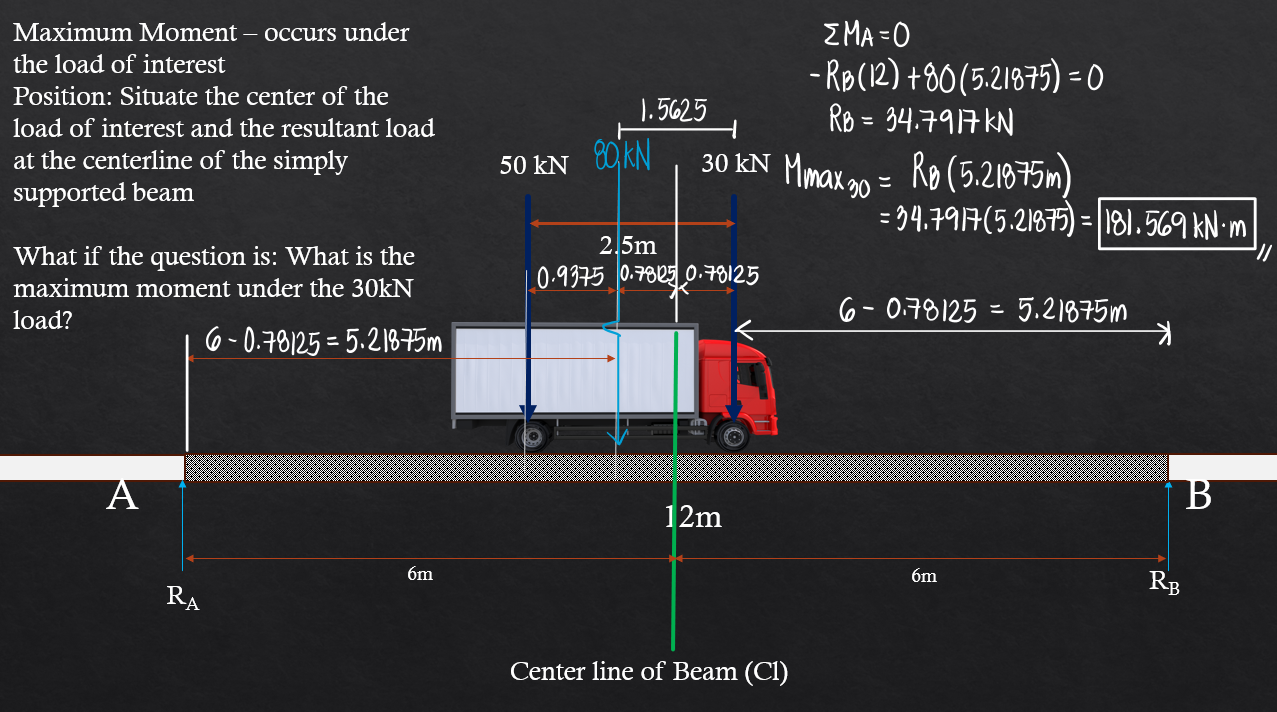
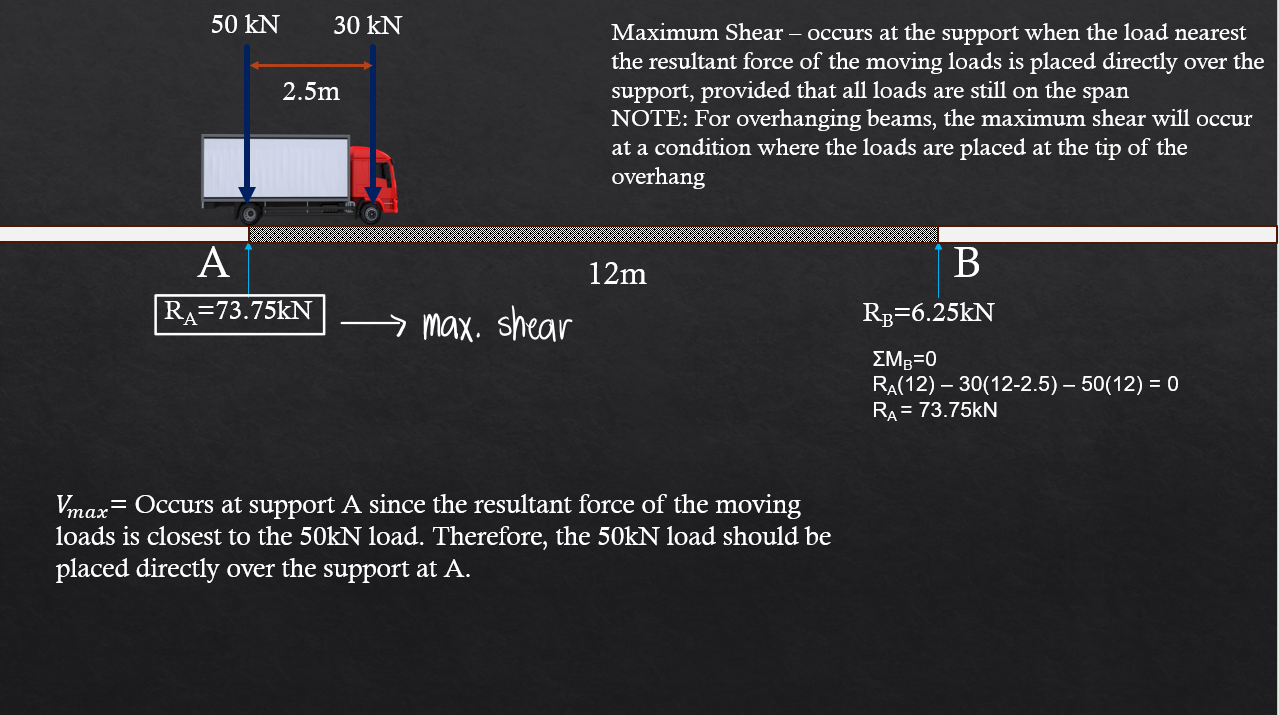
A truck weighing 13kN has a wheel base of 2.8m. It carries 60% of its load on the rear side. Compute the maximum moment and maximum shear if it crosses a 4.3m span.
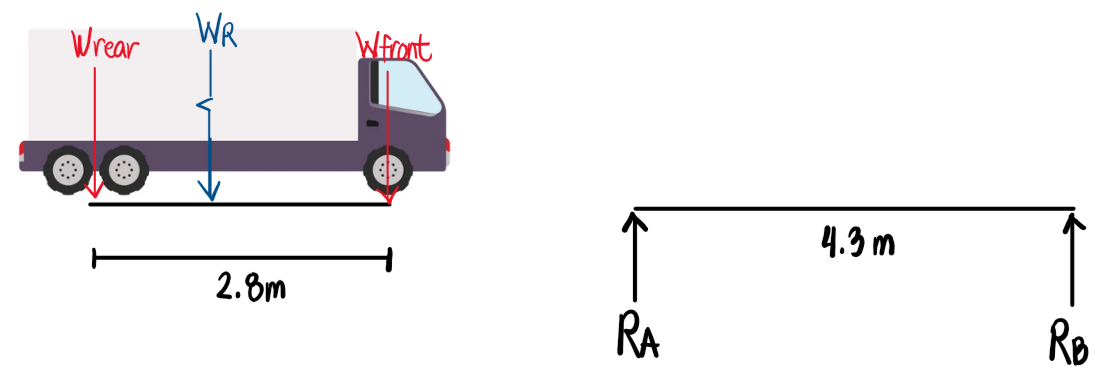


The resultant load here is the total load of 13kN. The rear load is 60% of 13kN, which is 7.8kN, and the front load is, therefore, 5.2kN. Computing the location of the resultant with the reference axis at the rear load:
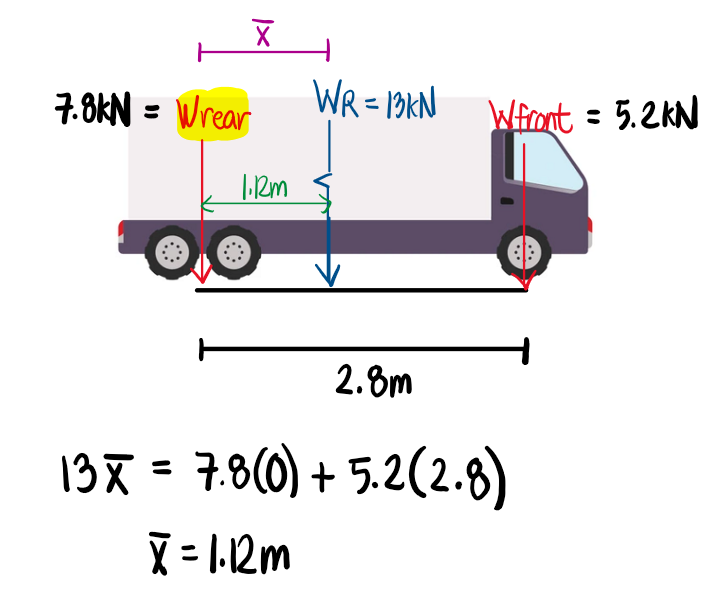
Using the concept of the placement of the loads where we take the center point of the load of interest and the resultant, and place it at the midspan, we would develop the figure below. However, it is important to notice that the front load would be outside the span. We verify this by solving the corresponding distances. Since 2.24m > 2.15m, the front load will be outside the span, and so our computation of the maximum moment will discount the front load.
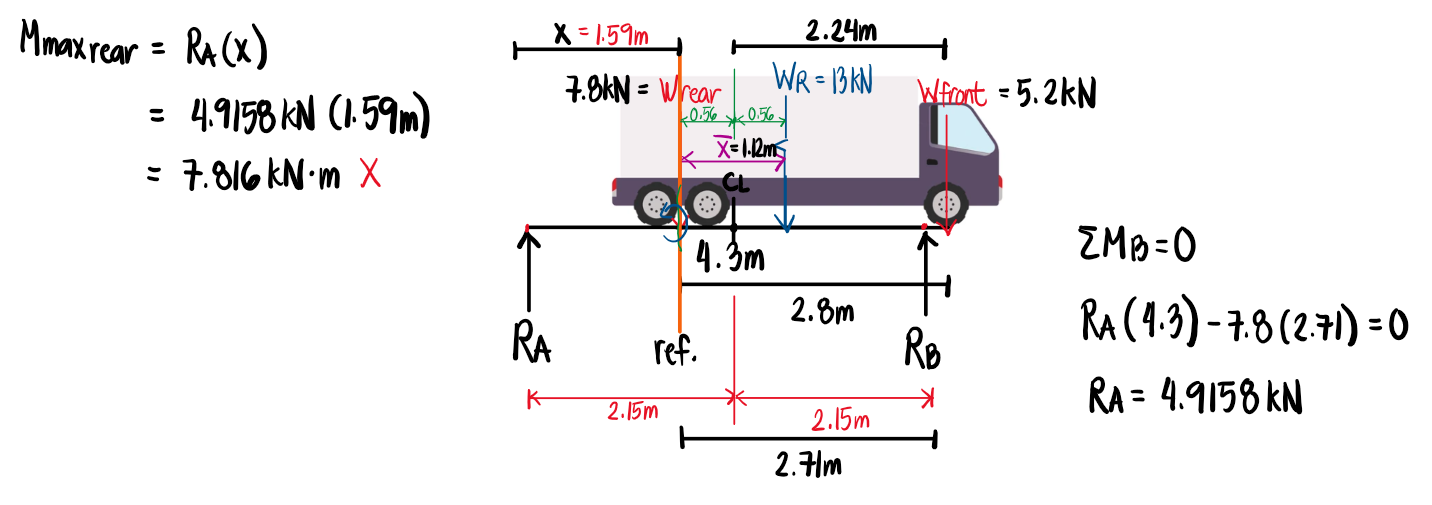
The proper configuration for the maximum moment under the 7.8kN load, therefore, is one where the truck moves slightly to the right so that the 7.8kN load is directly over the midspan. Here, we can apply the general formula for the maximum moment caused by a concentrated load at the midspan for simply supported beams, PL/4. This value is the maximum moment under the 7.8kN load.
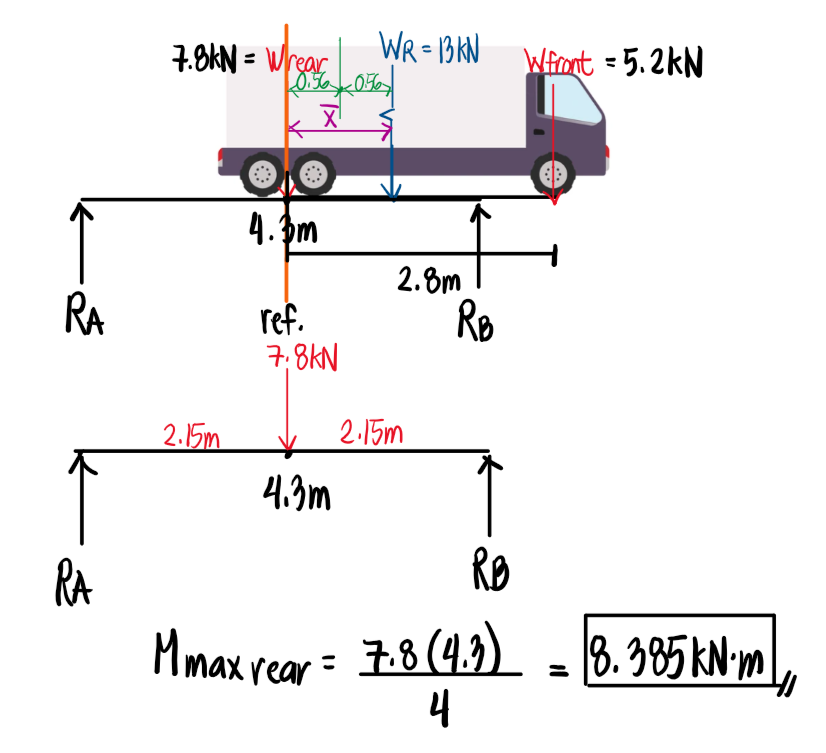
Now that we have finished computing the maximum moment under the rear load, we are also interested in computing the maximum moment under the front load. We do this by getting the center point between the resultant 13kN load and the front load, and placing that center point on the midspan of the beam. Then, we cut the beam exactly at the front load and take moments from the right to simplify the calculation. We could obtain the same result by taking moments from the left, but more loads would have to be considered.
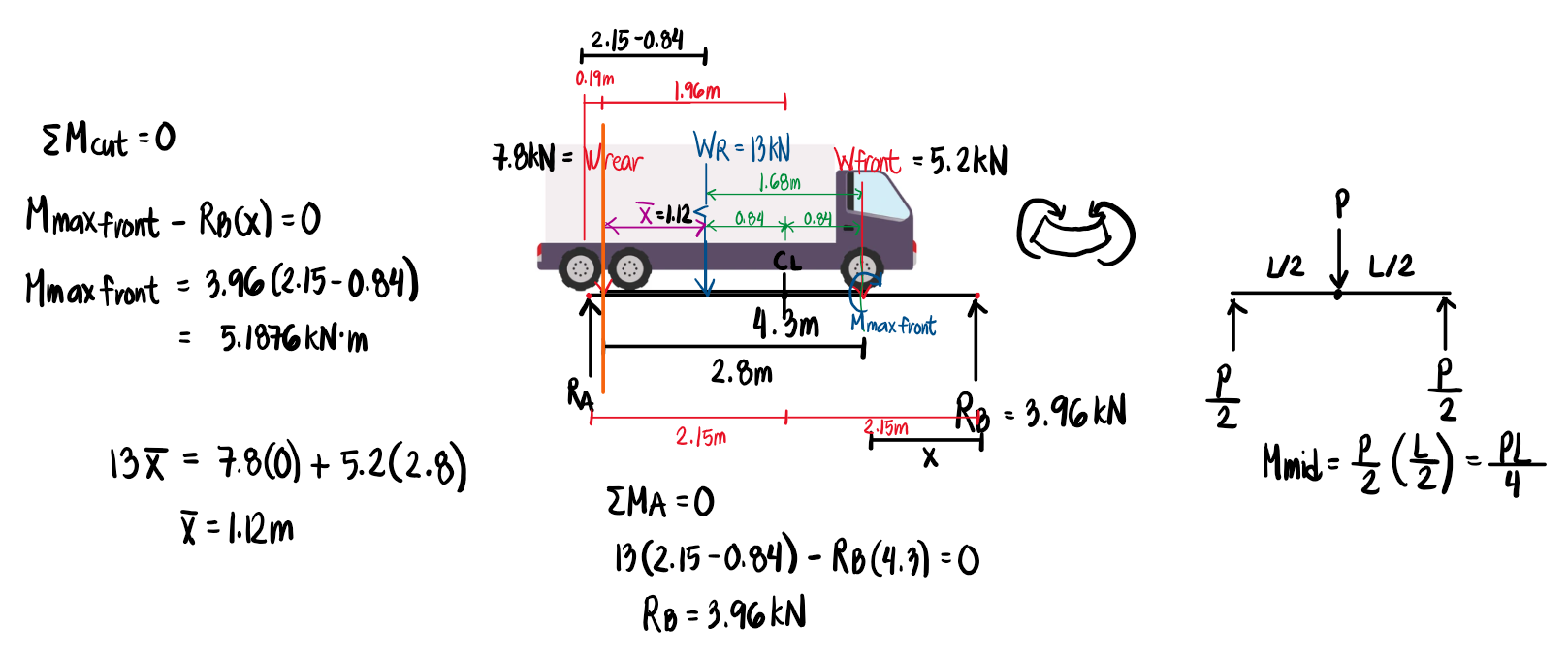
To compute the maximum shear, we simply place the extreme load closest to the resultant over the support. The resultant is closer to the rear load, so we place the rear load at point A. If, for instance, the resultant is closer to the front load, then we solve the maximum shear by placing the front load at the right support (B). The support reaction directly below the extreme load will be the maximum shear in the beam, as we place it at a differential distance x from the support.
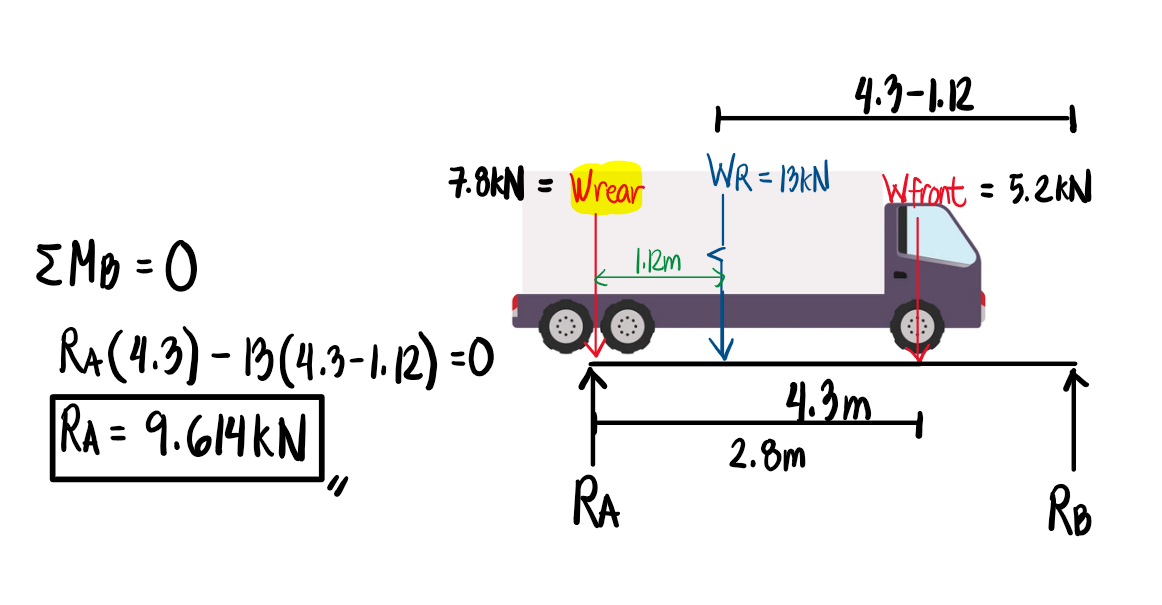
Refer to the image shown:



See images:




A truck and trailer combination crossing a 12-m span has axle loads of 10, 20, and 30kN separated respectively by distances of 3 and 5m. Compute the maximum moment and maximum shear developed in the span.



See images:
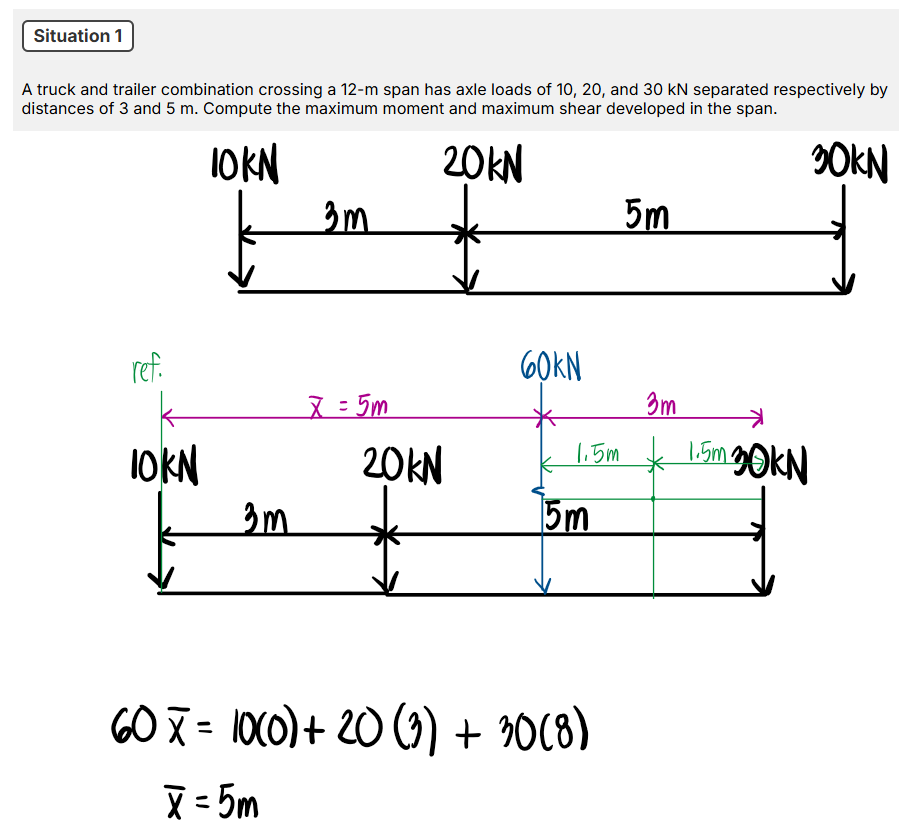
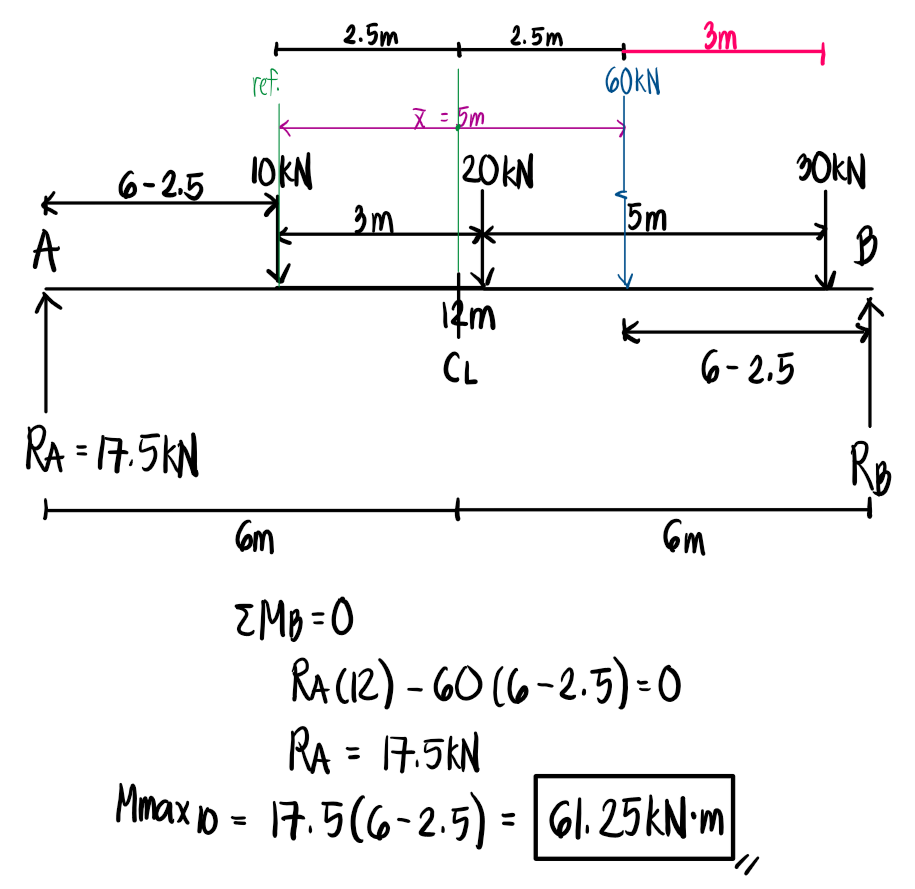
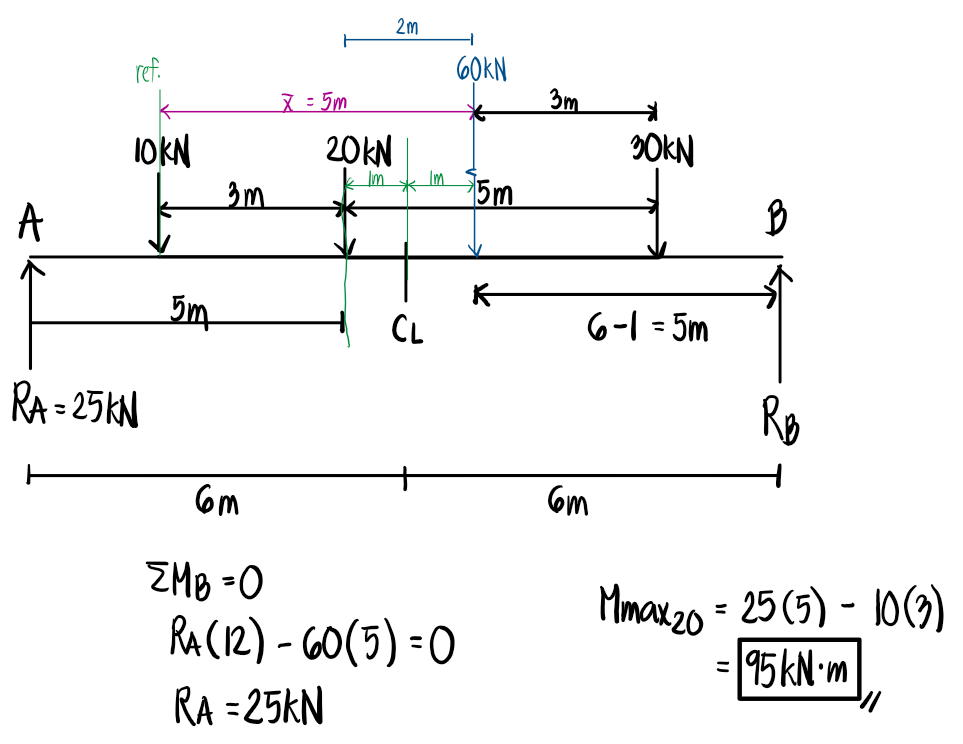
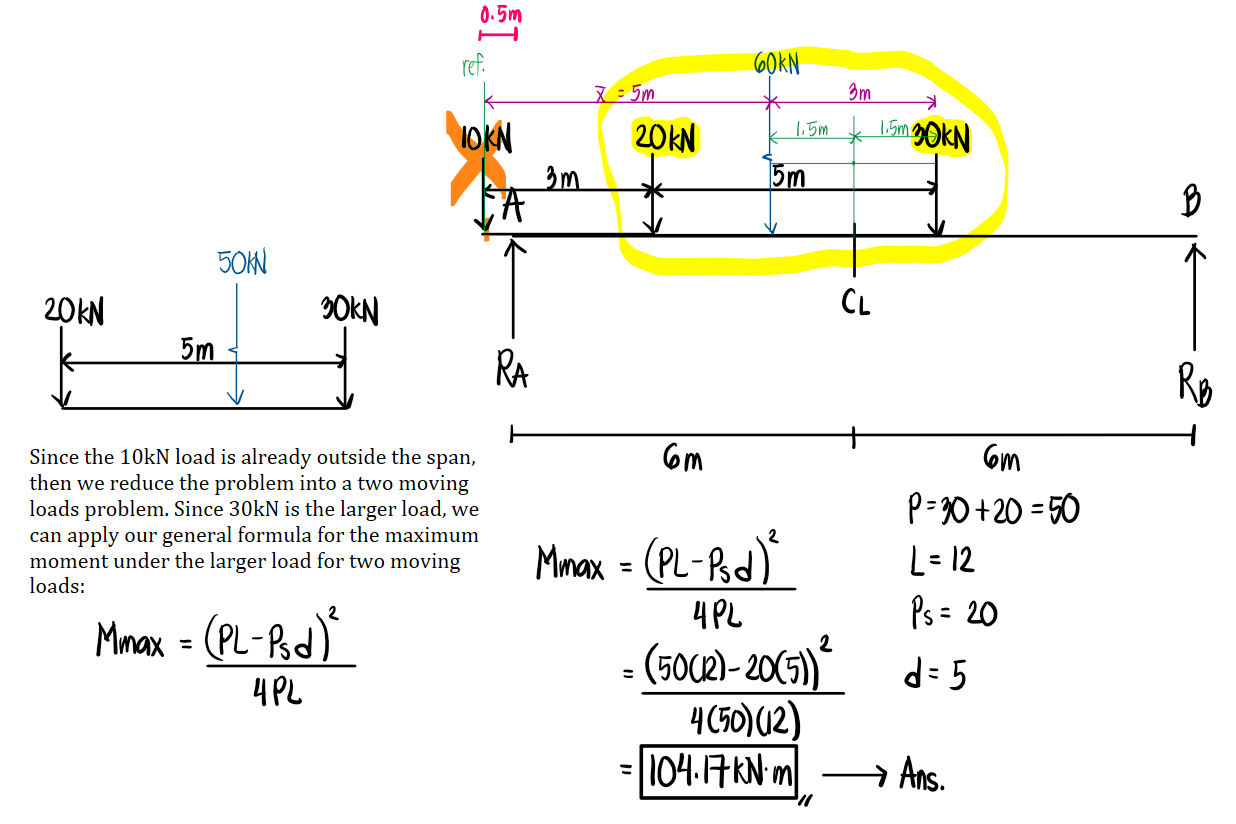
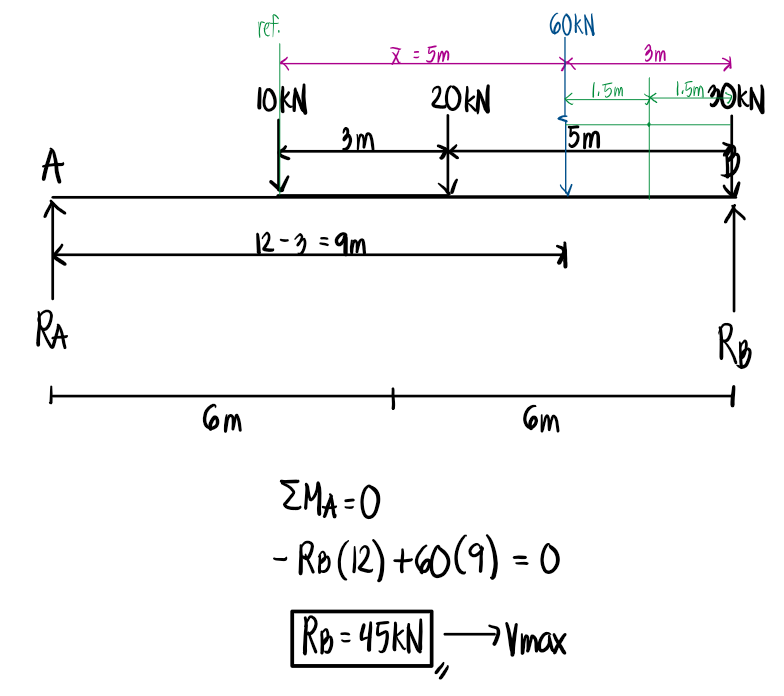
Refer to the image shown:



See images:




Refer to the image shown:



See images:




Refer to the image shown:



See images:




Refer to the image shown:



See images:



